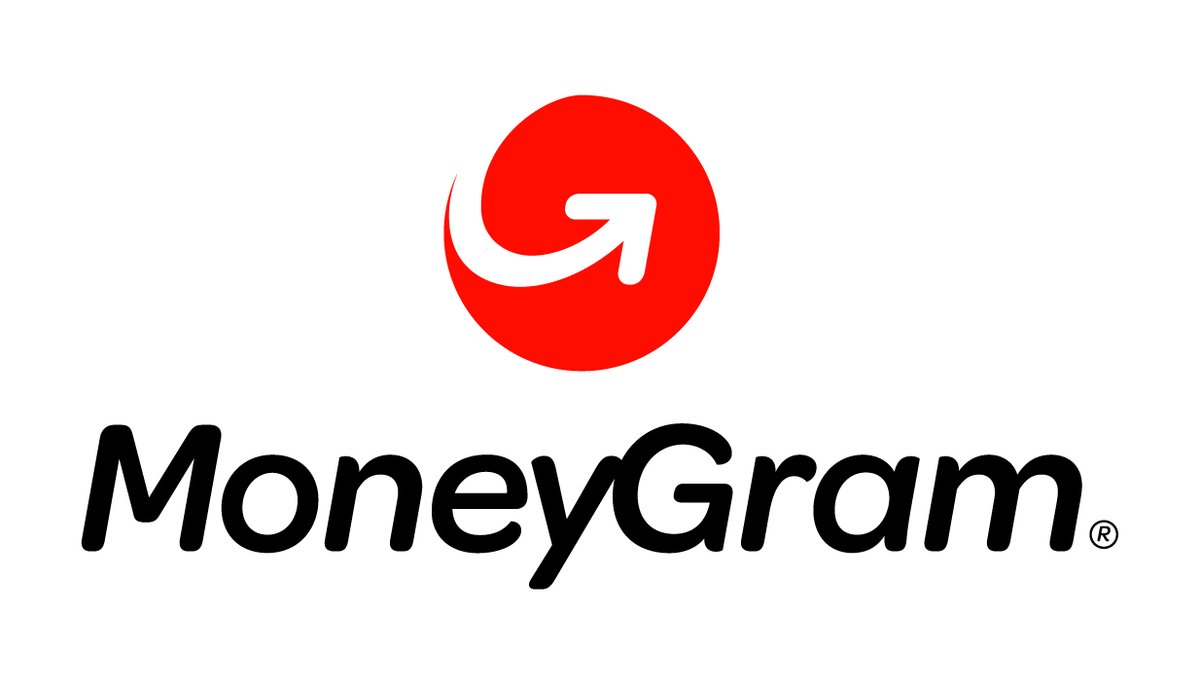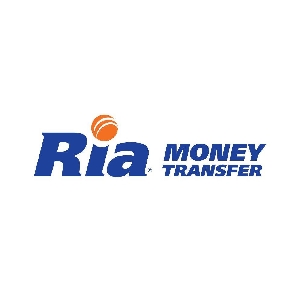Explore the essential virgin hair terms with our guide. This guide offers valuable advice for European customers on selecting the right hair type, considering both quality and price. Plus, find expert tips on how to care for and maintain virgin hair extensions, ensuring long-lasting beauty and durability.

VIRGIN HAIR TERMS: ALL THE TERMS YOU NEED TO KNOW
1. Introduction to Common Virgin Hair Terms
In this section, we will explore an overview of the hair extensions market. Through this, you will understand the importance of familiarizing yourself with key virgin hair terminology to make an informed purchasing decision.
1.1. Overview of the Hair Market
The global hair extensions market has seen substantial growth, driven by rising consumer demand for wigs, weaves, and extensions across various demographics. Increasing awareness of beauty products, changing fashion trends, and advancements in hair technology have contributed to this expansion. In particular, the demand for premium products such as virgin hair—which refers to hair that has not been chemically treated or processed—has surged due to its perceived superior quality and longevity.
The market is segmented by hair type (synthetic vs. human hair), and virgin hair, especially from regions like Southeast Asia and India, is highly sought after. Consumers are more willing to invest in these premium products, particularly for long-term wear or professional styling, making the virgin hair sector a key focus for growth.
Emerging trends also show increased demand for customization, including color treatments, lengths, and textures that suit individual preferences. As more consumers seek out personalized beauty solutions, the market for hair extensions is expected to continue growing.

Overview of the Hair Market
1.2. Why Understanding Virgin Hair Terms Is Important
Understanding key virgin hair terminology is essential for making informed purchasing decisions, as the terms define the quality, texture, and origin of the hair. By knowing these terms, buyers can more accurately assess the longevity, maintenance needs, and styling options of the hair extensions, ensuring they invest in products that align with their expectations and personal needs.
Additionally, recognizing different hair types and terms helps buyers differentiate between synthetic hair, remy hair, and virgin hair, each offering varying levels of quality and price. This understanding allows buyers to better match their hair preferences, lifestyle, and budget, avoiding the risk of purchasing unsuitable or misrepresented products.

Understanding virgin hair terms helps buyers choose the right products for their needs
2. Differentiating Key Virgin Hair Terms and Related Concepts
To better understand the world of premium hair extensions, it’s important to differentiate key virgin hair terms and related concepts that define quality and suitability.
2.1. Virgin Hair
Virgin hair is widely regarded as one of the finest types of hair available in the market, known for its exceptional quality and beauty. This hair is collected from a single donor, ensuring that it is not mixed with hair from anyone else, which contributes to its unique characteristics. One of the defining features of virgin hair is its intact cuticle, which is the outer layer of the hair that protects it and maintains its natural shine and softness. Additionally, the hair strands are uniformly aligned, meaning they all flow in the same direction, which helps prevent tangling and ensures a smooth appearance.
Virgin hair is particularly ideal for coloring and bleaching, making it a popular choice for those looking to achieve vibrant shades without compromising the hair’s integrity. It can easily be dyed to various colors, including light blonde, without the risk of severe damage that often accompanies chemically treated hair.
Because of its unprocessed nature, virgin hair retains its natural strength and durability, making it a long-lasting option for extensions and wigs. Customers often choose virgin hair for its versatility and the ability to style it just like natural hair, allowing for a wide range of looks while maintaining its health and luster.

Virgin Hair is untreated human hair from a single donor, with the cuticle intact, offering natural texture and long-lasting durability.
2.2. Raw Hair
Raw hair is completely unprocessed human hair that has been collected directly from a donor without any chemical treatments or alterations. This type of hair is often either brushed or unbrushed, maintaining its natural state and texture. The strands are typically gathered in bulk and may include various textures such as straight, wavy, or curly, reflecting the donor’s original hair characteristics. Because raw hair is untouched, it is considered one of the purest forms of hair available, making it highly sought after for its authenticity and versatility in styling.
One of the key advantages of raw hair is its ability to be dyed and styled without the risk of damage that often comes with processed hair types. Due to its natural state, raw hair can achieve a wide range of colors and textures, allowing for customization that fits individual preferences. However, it does require more maintenance compared to other hair types, as its unprocessed nature means it can be more prone to tangling and dryness.

Raw hair is human hair, combed or uncombed, without any intervention.
2.3. One Donor Hair
One donor hair refers to hair that is collected entirely from a single individual, ensuring uniformity in texture, color, and quality. This is in contrast to other hair types, where hair from multiple donors might be mixed together, leading to inconsistencies in color and texture. One donor hair is often used in high-quality products like virgin and raw hair extensions, as it provides a more seamless and natural appearance when applied.
This type of hair is favored for creating full, natural-looking hairstyles since it maintains consistency throughout. It is often prized for its realistic look and ease of styling, as it behaves similarly to one’s own natural hair.

One donor hair refers to hair collected entirely from a single individual, ensuring uniformity in texture and color for a seamless, natural look.
Virgin hair, raw hair, and one-donor hair are all premium types of hair, but there are some important differences that customers should note.
- Virgin hair is hair that has not undergone any chemical treatment, with the cuticle intact, making the hair soft, shiny, and easy to dye or bleach without damaging its structure.
- Raw hair is also untreated but may come from multiple donors, maintaining its natural texture, though it requires more care as it is prone to dryness and tangling.
- One-donor hair, as the name suggests, is hair collected entirely from a single individual, ensuring uniformity in color and texture, providing a natural and cohesive look.
Depending on their needs, customers can choose virgin hair for easy dyeing, raw hair for its pure natural state, or one-donor hair for maximum consistency and natural appearance.
3. Other Popular Hair Terms in the Hair Industry
In addition to virgin hair, there are several other popular hair terms in the industry that are essential to know when exploring hair extension options.
3.1. Popular hair terms based on quality
When discussing hair quality, it’s essential to explore the various popular terms that help distinguish between different types of hair extensions and wigs. Let’s start with an overview of hair types based on quality.
3.1.1. Remy Hair
Remy hair is a type of human hair that has been collected from multiple donors but is carefully aligned so that all cuticles run in the same direction. This process helps reduce tangling and enhances the overall manageability of the hair. While remy hair maintains a degree of quality due to its cuticle alignment, it has been mixed from hair of two or more individuals, which can result in slight variations in texture and color. This mixing means that the uniformity and smoothness of remy hair may not match the standards set by virgin hair, which is prized for its purity and consistent quality.
Despite these differences, remy hair is still a popular choice for extensions and wigs because it provides a natural look and feel. It is generally more affordable than virgin hair while offering good durability and versatility for styling. However, users should be aware that, due to the mixing process, the overall appearance may not be as refined as virgin or raw hair, which are known for their higher quality and lack of processing. For those looking for a balance between quality and cost, remy hair can be a suitable option.

Remy hair is a type of human hair that has been collected from multiple donors
3.1.2. Non-Remy Hair
Non-remy hair refers to human hair that has been collected without regard for the direction of the cuticles. This means that the hair strands can be mixed from multiple donors and are often oriented in different directions, leading to a higher likelihood of tangling and matting. Because the cuticles are not aligned, non-remy hair is generally considered to be of lower quality compared to remy hair, which maintains cuticle alignment for better manageability. This type of hair is often less expensive and is commonly used in budget-friendly hair extensions and wigs.
Despite its lower quality, non-remy hair can still be a viable option for individuals seeking a cost-effective solution for hair extensions. However, users should be prepared to invest more time in maintenance, as the likelihood of tangling and shedding is higher. Proper care, such as regular conditioning and gentle handling, is essential to prolong the lifespan of non-remy hair. While it may not provide the same natural appearance or durability as remy or virgin hair, non-remy hair can still serve well for temporary styles or one-time use.

Non-Remy hair refers to human hair that has been collected without regard for the direction of the cuticles.
3.2. Hair quality grades
Supper Double Drawn Hair is the highest quality, consisting of nearly uniform-length strands that provide a consistently thick appearance from root to tip. This luxurious option is favored for its volume and natural look, making it perfect for those seeking glamour. Double Drawn Hair maintains a fuller look compared to Single Drawn hair, with some length variation but still offers more thickness, making it a popular choice for everyday wear among European customers.
In contrast, Single Drawn Hair contains a mix of lengths, giving a tapered appearance that mimics natural hair growth. While it’s more affordable, it may lack the volume of the other two options, appealing to those who prefer a casual, authentic look. Ultimately, the choice among these types depends on individual preferences for thickness, uniformity, and budget.

Hair quality grades
3.3. Popular hair extension types
When exploring different hair extension methods, it’s important to understand the various types available to choose the one that best suits your styling preferences and lifestyle. Let’s take a closer look at some of the most popular hair extension types.
3.3.1 Tip-in Hair Extensions and Tape-in Hair Extensions
Tip-in Hair Extensions feature small keratin tips that are bonded to the natural hair using heat. This method allows for a more seamless integration, as the extensions can be placed close to the scalp. The keratin bonds provide a strong hold, making them suitable for long-term wear. However, the application process requires professional assistance to ensure that the bonds are applied correctly, preventing damage to the natural hair. Tip-in extensions are often praised for their natural movement and ability to blend well with existing hair, allowing for versatile styling options.
On the other hand, Tape-in Hair Extensions consist of adhesive strips that are applied to the natural hair, sandwiching it between two extensions. This method is relatively quick and less damaging, as it does not require heat for application. Tape-in extensions are easy to apply and remove, making them a favorite for those looking for a temporary or semi-permanent solution. They lie flat against the scalp, creating a natural look and feel. Tape-in extensions are also reusable, allowing for adjustments and reapplication as needed. Both options offer a way to enhance hair but should be chosen based on individual preferences and lifestyle needs.

Tip-in Hair Extensions và Tape-in Hair Extensions
3.3.2 Clip in Hair
Clip-in Hair Extensions are a popular choice for individuals seeking a temporary and versatile way to enhance their hairstyle. These extensions come with small clips attached to each weft, allowing users to easily attach and remove them without any professional assistance. The application process is straightforward: simply section off the natural hair, open the clips, place the weft at the root, and snap the clips shut to secure the extension. This method offers the flexibility to change hairstyles quickly, making it ideal for special occasions or daily use.
One of the key benefits of clip-in extensions is their convenience and low commitment. Users can choose to wear them for a day and remove them at night, avoiding the long-term maintenance associated with other types of extensions. Clip-in hair extensions are available in various lengths, colors, and textures, making it easy to find a perfect match for one’s natural hair. They are typically made from either synthetic fibers or high-quality human hair, with human hair options providing a more natural look and feel. With proper care, clip-in extensions can last for several months, offering a reliable solution for adding volume and length when needed.

Clip-in Hair Extensions
3.3.3 Weft Hair
Weft Hair refers to hair extensions that are sewn onto a track or weft, providing a versatile option for adding length and volume to natural hair. Weft hair can come in various forms, including machine-made and hand-tied options. Machine-made wefts are produced using a sewing machine, resulting in a more uniform and thicker band of hair, while hand-tied wefts are created by individually tying each strand, which offers a more natural look and feel. This type of hair is often used for sew-in applications, where the wefts are attached to the natural hair using needle and thread, providing a secure and long-lasting hold.
One of the advantages of weft hair is its ability to be customized according to the wearer’s needs. It can be dyed, cut, and styled just like natural hair, allowing for a wide range of styling possibilities. Weft hair extensions are available in various lengths, colors, and textures, making it easy for individuals to find the perfect match for their natural hair. However, the application process typically requires professional assistance to ensure a proper fit and to minimize potential damage to the natural hair. With proper care and maintenance, weft hair extensions can last for several months, making them a popular choice among those looking for a semi-permanent hair enhancement solution.

Weft Hair
3.3.4 Pony Tail
Ponytail hair extensions are a stylish and convenient option for those looking to achieve a longer, fuller ponytail without the commitment of permanent extensions. These extensions typically come as a single piece that can be easily attached to the base of a natural ponytail, instantly adding volume and length. The ponytail extension can be secured with a built-in clip or a wrap-around design that blends seamlessly with the wearer’s hair. This versatility allows individuals to create various looks, from sleek and polished to voluminous and tousled, making it suitable for both casual and formal occasions.
One of the key benefits of ponytail hair extensions is their ease of application and removal, making them perfect for those who want to switch up their hairstyle quickly. They are available in various colors, lengths, and textures, allowing for customization to match one’s natural hair seamlessly. Additionally, ponytail extensions can be styled with heat tools, just like natural hair, enabling users to curl, straighten, or wave the extension to achieve their desired look. With proper care, ponytail extensions can be a long-lasting addition to any hair routine, providing flexibility and style without the need for permanent commitment.

Pony Tail
4. Buying Guide to Help European Customers Choose the Right hair
When navigating the European market for hair extensions, it’s essential for customers to understand their specific needs to choose the right hair type. Choosing the right hair type for your needs involves considering factors like texture, color, and length. European customers often prefer high-quality human hair options, such as virgin or remy hair, which offer a natural appearance and longevity. It’s important to assess the intended use, whether for everyday wear or special occasions, as this can influence the type of hair that will best suit individual preferences.
In addition to selecting the appropriate hair type, key factors to consider when buying hair in the European Market include the reputation of the supplier, product reviews, and return policies. Customers should also be aware of the difference between synthetic and human hair, as the latter typically provides a more natural look and feel. Price and quality considerations play a crucial role in decision-making; while higher-quality hair may come at a premium, investing in good quality often results in better durability and styling options. Balancing these elements will help European customers make informed purchases that align with their beauty needs and budgets.

Buying Guide to Help European Customers Choose the Right hair
5. Tips for Using and Maintaining Virgin Hair
When using and maintaining virgin hair, it’s essential to adopt a proper care routine to ensure its durability and natural beauty. How to care for virgin hair to maintain its durability and natural beauty involves gentle cleansing with sulfate-free shampoos and moisturizing conditioners to keep the hair hydrated. It’s also important to minimize exposure to heat by using thermal protection products before styling, as excessive heat can lead to damage over time. Regular deep conditioning treatments will help maintain moisture levels, keeping the hair soft and manageable. Additionally, it’s advisable to avoid sleeping with wet hair and to use a silk or satin pillowcase to reduce friction while sleeping.
For styling, styling tips and using hair care products include opting for heat styling tools that have adjustable temperature settings to avoid overheating the hair. Using lightweight serums and oils can enhance shine and reduce frizz, contributing to a polished appearance. When braiding or tying up the hair, using soft hair ties instead of elastic bands can prevent breakage. Finally, always detangle the hair gently with a wide-tooth comb or a brush designed for extensions, starting from the tips and working up to the roots. By following these tips, users can enjoy beautiful, long-lasting virgin hair extensions that maintain their quality and aesthetic appeal.

Tips for Using and Maintaining Virgin Hair
Conclusion
In conclusion, understanding virgin hair terms is essential for European customers to make informed decisions that align with their style and needs. Recognizing the distinctions between different hair types, such as virgin, raw, and remy hair, along with various extension methods like wefts and clip-ins, helps customers choose the best options for their lifestyle. Proper care and maintenance are also crucial for preserving the quality and appearance of extensions, ensuring they stay vibrant and natural-looking. With the right knowledge of virgin hair terms, customers can enjoy high-quality hair that enhances their beauty effectively.
If you’re interested in exploring the benefits of Vietnamese hair products or need to connect with a reliable Vietnamese hair factory, feel free to contact K-Hair factory for more information:
WhatsApp: +84 85 555 5753
Fanpage: Julia K-Cabello
Instagram: julia_k.cabello
















No comments yet